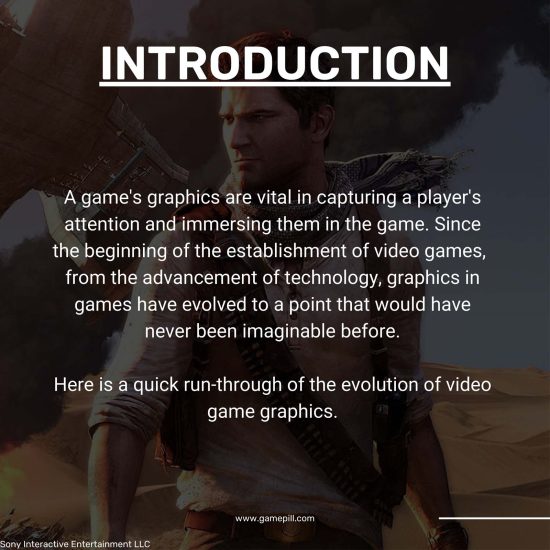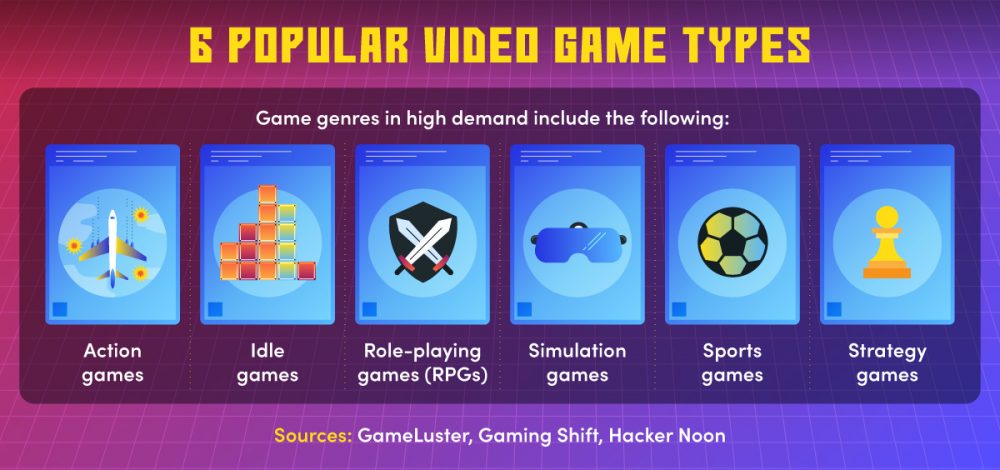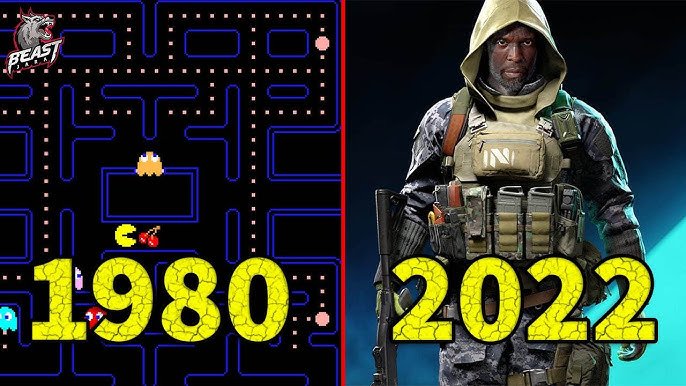
Introduction
History of Graphics in Video Games
The evolution of graphics in video games is a captivating journey that reflects the rapid advancements in technology and creativity. Let’s take a quick stroll down memory lane.
In the late 1970s and early 1980s, video games were fairly rudimentary, characterized by their simple pixelated graphics. Titles like Pong and Space Invaders dominated the arcades, enchanting players with their straightforward yet addictive gameplay. As years went by, we saw graphics begin to flourish. The introduction of 8-bit and later 16-bit graphics in consoles like the NES and Sega Genesis gave characters a more defined appearance and enhanced animations that captivated a wider audience.
Fast forward to the late 1990s, and we witness a significant leap forward with the advent of 3D graphics. Titles like Doom and Final Fantasy VII showcased the power of 3D rendering, drawing players into immersive worlds like never before. This shift wasn’t just about making things look pretty; it represented the dawn of a new era that would change how players experienced games forever.
Significance of Graphics Evolution in Gaming
The continuous evolution of graphics comes with profound relevance to the gaming landscape. Not only do improved graphics contribute to enhanced visual experiences, but they also have played a significant role in driving game sales and popularity. Here are a few aspects illustrating their significance:
- Immersion & Engagement: High-quality graphics draw players into the game world, creating an emotional connection and a sense of realism that keeps them engaged for hours on end.
- Narrative Impact: Graphics enhance storytelling by providing visual cues, allowing players to connect more deeply with characters and plotlines.
- Competitive Edge: Games with cutting-edge graphics often find themselves leading the market, as gamers flock to visually stunning experiences.
In conclusion, the history and significance of graphics in video games are not just a timeline of technological advancements; they reflect a deeper narrative about how we, as gamers, have evolved in tandem with our beloved games. This evolution continues to shape the way games are developed, enjoyed, and appreciated, paving the way for exciting future innovations. As we delve deeper into this topic, stay tuned to discover the fascinating journey of graphics through gaming history and its implications for the future!

Early Developments in Gaming Graphics
Introduction of 2D Graphics
The journey of gaming graphics can be traced back to the mesmerizing charm of 2D graphics. It all started in arcades and home consoles where pixelated visuals were the norm. A memorable anecdote for many gamers is the nostalgic feeling of inserting a quarter into a machine for a round of Pac-Man. The simplicity of those 2D sprites, brightly colored and easily recognizable, instantly immersed players in a vibrant world that was both inviting and challenging.
During this period, a few key elements defined 2D graphics:
- Limited Color Palettes: The hardware of the time, such as the Atari 2600, imposed restrictions on the number of colors, forcing developers to be creative within these limits.
- Sprite Animation: Characters and objects were represented as sprites—small images that could be animated. This technique allowed for basic movements and interactions.
- Scrolling Backgrounds: Innovations like parallax scrolling added depth to games, making them feel more dynamic. Games like Super Mario Bros. showcased this beautifully, as players navigated through layered environments.
This era set the groundwork for what was to come, igniting a passion for video games that would only grow with time.
Transition to 3D Graphics
As technology advanced into the 1990s, a profound shift began to take place—the transition to 3D graphics. This evolution transformed the gaming landscape, unveiling worlds that were far more immersive than anything previously seen. Personal favorites like Doom and Wolfenstein 3D not only redefined gameplay mechanics but also showcased how three-dimensional perspectives could alter player motivations and experiences.
Here are some pivotal advancements during this transition:
- Polygonal Modeling: 3D graphics utilized polygons to create characters and environments, allowing for more complex and realistic images.
- Texture Mapping: Developers could now apply textures to 3D objects, adding detail and realism that 2D sprites simply could not achieve.
- Camera Angles and Control: The introduction of various camera perspectives transformed gameplay, making it necessary for players to adopt new strategies and ways of engagement.
This transition was not just technological; it marked a cultural milestone in gaming. Players were suddenly able to explore vast three-dimensional worlds, bringing forth a new era of gameplay that would shape the future of video games. As we move on, let’s delve into the advancements in graphics technology that built upon these early developments.

Advancements in Graphics Technology
Introduction of Shader Technology
The leap from simple 3D models to visually stunning environments can largely be attributed to the introduction of shader technology. Shaders are special programs that run on the GPU and dictate how things should appear on the screen—from coloring pixels to creating complex visual effects. It’s fascinating to consider how these tiny pieces of code have revolutionized the graphics we enjoy today.
Imagine stepping into a game like The Elder Scrolls V: Skyrim. The way the light reflects off the snow-capped mountains and how shadows play on the ground is a direct result of advanced shaders. With shaders, developers can define:
- Surface Properties: They allow for the simulation of different materials—wood, metal, and skin—all with their unique textures and highlights.
- Complex Effects: Shaders gave rise to effects like dynamic shadows, reflections, and even post-processing effects like bloom and depth of field.
This shift has enabled players to be immersed in environments that feel almost alive, bridging the gap between the virtual and real world.
Evolution of Realistic Textures and Lighting Effects
Building on shader technology, we’ve witnessed the evolution of realistic textures and lighting effects. Gone are the days when games relied entirely on simple color palettes. Today’s games employ sophisticated algorithms and high-resolution textures to enhance realism.
Consider the difference between older titles and modern ones:
- Texture Mapping: With higher resolution textures, developers can create intricate details, making surfaces appear tangible. Think of the rich detail in games like Red Dead Redemption 2, where every blade of grass and wood grain is painstakingly crafted.
- Dynamic Lighting: Instead of static lighting setups, games can now utilize dynamic lighting systems that react to the environment. Imagine walking through a shadowy cave, where light seamlessly dances across the walls as you move—a spectacular visual treat!
Role of Ray Tracing in Graphics Enhancement
As we reach the zenith of graphics technology, ray tracing stands out as a groundbreaking advancement in graphics enhancement. Utilized in blockbuster titles like Cyberpunk 2077, ray tracing simulates the way light interacts with objects in the most realistic way possible.
Here’s what makes ray tracing so impressive:
- Accurate Reflections: Light rays bounce off surfaces just as they would in reality, creating lifelike reflections and refractions.
- Natural Shadowing: Shadows cast in games using ray tracing are softer and more dynamic, reflecting the true nature of light.
- Depth & Dimension: This technique contributes to a richer visual tapestry, elevating the gaming experience to unparalleled levels.
The integration of these advancements continues to push the envelope of what is possible in video game graphics, paving the way for a future that holds even greater visual wonders. As we explore the impact of graphics evolution on the gaming experience, we can begin to appreciate how these innovations transform our interactions with video games.

Impact of Graphics Evolution on Gaming Experience
Immersion and Realism in Modern Games
The evolution of graphics technology has dramatically transformed the gaming experience, particularly in inspiring a new level of immersion and realism. Today’s gamers are treated to visually breathtaking worlds that engage both their senses and emotions. Imagine stepping into a game like The Last of Us Part II, where the lush environments and intricate animations pull you into the heart of a gripping narrative.
The enhanced graphics contribute to immersion in several ways:
- Lifelike Characters: Advanced facial animations, made possible by motion capture and sophisticated shaders, let players connect deeply with characters. Seeing the emotions play across a character’s face can make gamers feel genuinely invested in their stories.
- Environmental Detail: Every droplet of rain, rustling leaf, and shaft of light creates a rich tapestry, immersing players in an almost film-like experience. Games like God of War showcase this brilliantly, where the “camera” feels almost cinematic.
- Interactive Worlds: Modern graphics technology allows for environments that react dynamically to player actions. Whether it’s smashing pots or leaving footprints in the sand, every interaction feels meaningful, enhancing the overall experience.
Influence on Game Development and Design Trends
The impact of evolving graphics goes beyond aesthetics; it has profoundly influenced game development and design trends. As technology advances, so do the expectations of players, shaping the types of games being developed today.
- Open-World Design: With powerful engines like Unreal Engine and Unity, developers can create expansive worlds that feel alive. This trend leads to the popularity of open-world games, where players explore rich narratives and environments, as seen in titles like Breath of the Wild.
- Focus on Visual Storytelling: Developers are now harnessing graphics to tell stories in innovative ways. Visual narratives, with minimal dialogue, rely heavily on graphics to convey emotions and plot progression, elevating the artistry of game design.
- Indie Game Movement: Interestingly, as high-end graphics have flourished, so too has the indie game scene. Developers are increasingly focusing on unique art styles, sometimes opting for pixel art or hand-drawn graphics, demonstrating that gameplay can be engaging regardless of graphic fidelity.
In conclusion, the evolution of graphics has not only reshaped how games look but has also revolutionized how they feel and play, paving the way for innovation in game design. As we look forward, let’s explore the future trends in video game graphics, where the next wave of creativity and technology awaits.

Future Trends in Video Game Graphics
Virtual Reality and Augmented Reality Integration
As we venture into the future of video game graphics, the integration of virtual reality (VR) and augmented reality (AR) stands out as a monumental change on the horizon. With headsets like the Oculus Rift and PlayStation VR gaining popularity, players are no longer confined to a screen; they are stepping directly into the game world.
Imagine immersing yourself in a breathtaking VR landscape, where you can pick up objects and interact with characters as if they were right in front of you. This level of engagement opens up endless possibilities for game design:
- Enhanced Interaction: Players can wave their arms, look around, and physically navigate the environment, creating a richer, more immersive experience.
- Social Connectivity: VR is evolving into a platform for social interaction, allowing players to meet in virtual spaces and experience multiplayer games together, regardless of physical location.
- Educational and Training Opportunities: Beyond traditional gaming, AR and VR have immense potential in fields such as education and training, allowing for interactive simulations that make learning fun and engaging.
As developers harness the power of these technologies, we can anticipate exciting new gameplay experiences that challenge our notions of what games can be.
Potential of Photorealistic Graphics in Gaming
Another thrilling trend to keep an eye on is the potential of photorealistic graphics in gaming. While we’re already seeing impressive graphics, the quest for hyper-realism continues unabated. Imagine playing a game that looks indistinguishable from reality—where textures, light, and shadows blend seamlessly to create an environment that feels genuinely lifelike.
Consider these future developments:
- Advanced Rendering Techniques: Techniques such as deep learning and artificial intelligence will likely enhance how graphics are rendered, allowing for real-time changes that mimic the complexities of nature and physics.
- Customizable Graphics: As technology progresses, players might gain the ability to tailor the level of detail in their graphics settings based on their hardware, making photorealistic experiences accessible to a wider audience.
- Dreamlike Environments: Games combining photorealism with artistic styles could lead to visually stunning experiences that transport players into imaginative worlds, much like Journey did but at an entirely new level of detail.
In summary, the future of video game graphics is pulsating with exciting innovation—from the immersive allure of VR and AR to the breathtaking potential of photorealistic visuals. As these trends unfold, the gaming experience will not only become more visually stunning but also richer and more engaging, profoundly reshaping how players connect with their favorite games. The journey ahead promises to be exhilarating, and at TECHFACK, we can’t wait to see where it takes us!

Conclusion
Summary of Graphics Evolution in Video Games
The journey through the evolution of graphics in video games is nothing short of remarkable. From the early days of simple 2D sprites to today’s breathtaking 3D worlds with intricate lighting effects and lifelike textures, the transformation has continually enriched our gaming experiences. Each stage of evolution has brought with it innovations that have dramatically changed how we perceive and interact with games.
Consider how:
- 2D Graphics paved the way for fundamental gameplay experiences, engaging players with colorful visuals and captivating storytelling.
- The transition to 3D graphics unlocked dynamic environments and complex narratives, setting a new standard for immersion and engagement.
- Shader technology, realistic textures, and ray tracing have further pushed visual boundaries, allowing for increasingly stunning representations of fantasy and reality.
As we reflected on these advancements, it’s clear that graphical innovations aren’t just about flash; they’ve fundamentally enhanced the emotional depth and storytelling potential of games, fostering connections between players and the virtual worlds they inhabit.
Implications for the Future of Gaming
Looking ahead, the implications of this rapid evolution are profound. With technologies like VR and AR poised to redefine player interactions and photorealism urging developers to create increasingly lifelike experiences, the future of gaming promises to be exhilarating.
Here are a few implications to consider:
- Enhanced Immersion: As graphics continue to improve, we can expect deeper emotional connections as players become part of the narratives they engage with.
- Innovation in Game Design: Designers will push the envelope, creating interactive worlds that blend seamlessly with player actions, fostering a unique and personalized adventure.
- Accessibility and Inclusivity: Advanced graphic technologies may allow for customized experiences, catering to a wide variety of devices, and enabling more players to join in the fun.
In conclusion, as the graphics in video games evolve, they not only enhance visual appeal but also redefine how stories are told and how players interact with those stories. At TECHFACK, we are excited to witness the unfolding of this vibrant future, confident that it will be filled with creativity and innovation that invites more people than ever to embrace the magic of gaming. The next chapter in this epic saga is about to begin, and we can’t wait to see where it leads!

